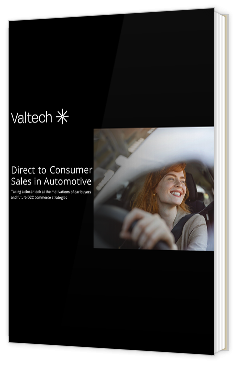

Taking a closer look at the motivations of car buyers and future D2C commerce strategies.

"The pandemic, which forced virtual sales processes to be adopted, showed that consumers are willing to purchase an expensive vehicle without seeing it first. The shift to directto-consumer (D2C) sales is no longer a question of if, but when.
However, it will require more than setting up a simple website. The experience must be frictionless, and buyers still need to be able to speak with experts who can handle nontraditional situations.
Connection to physical retail locations is still needed for in-person support and other types of services. Many consumer brands now are successfully operating a dual sales model. Apple has its own stores, a web portal and resellers.
And Nike has seen the benefits of selling D2C for over 10 years now.
Sports enthusiasts are ready to pay a premium to order a customized pair of Jordans direct from Nike. Consumer goods companies and even high-end luxury goods manufacturers are leveraging some form of direct-to-consumer sales. In nearly every case, these omnichannel experiences and even new ownership models, like subscriptions, are delivering the products in a way that best suits the buyers and are creating better consumer experiences.
But automotive has been an exception, not the rule.
Why? It’s a high-ticket item that most people need to finance. It’s a low frequency of repurchase category, and there is the question of trade-ins. In the U.S. particularly, franchise laws have made it difficult for car companies to sell direct to consumers. But those obstacles are beginning to crumble.
The pandemic has accelerated the need for touchless experiences, opening the door for a D2C channel for automakers. Automotive retail is changing with unprecedented speed and magnitude, driven by shifting customer expectations, new mobility offerings, and technological disruptions like digitization, vehicle connectivity and electrification.
The dealers even recognize that their grip on the sale of new vehicles is weakening. In this paper, we assess the drivers for this change and explore solutions that can help get automotive brands prepared for ecommerce and D2C relationships."